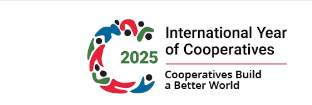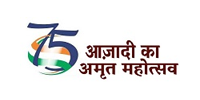Inland Fisheries
Introduction
Inland fisheries represent a vital component of the country's fisheries sector, contributing significantly to the national economy and providing livelihoods for millions. India, being the second-largest fish-producing country globally, relies heavily on its inland resources. India possesses vast and diverse inland fisheries resources comprising 0.34 million km of rivers and canals, 1.45 million ha of flood plain lakes, 2.75 million ha of ponds and tanks and 2.84 million ha of reservoirs. These resources form the backbone of the country's fisheries sector, making India 2nd largest aquaculture producer in the world.
Growth Story of Inland Fisheries
The inland fisheries sector has demonstrated remarkable growth over the decades, with production increasing from 7.5 lakh tonnes in 1950-51 to an impressive 139 lakh tonnes in 2023-24. This transformation has positioned inland fisheries as the dominant contributor to India's total fish production, now accounting for more than 75% of the total output. The sector has shown particular dynamism in recent years, with inland fish production more than doubling from 61 lakh tonnes in 2013-14 to 139 lakh tonnes in 2023-24 with an impressive CAGR of 8.58%.
Initiatives by Department
The Department of Fisheries has taken several initiatives for the development of Inland fisheries through flagship schemes like PMMSY and FIDF. Under PMMSY, the Department has sanctioned development of 23,285 ha of new pond area and also approved reservoir cages across States/UTs to harness the vast potential of reservoir fisheries. The Department is focusing heavily on technology-driven aquaculture through RAS and Biofloc technological interventions for increasing production and productivity. For ensuring quality seed availability, brood banks and hatcheries are being set up across the country for timely availability of seeds to fish farmers.
The Department is also bringing more area under aquaculture through innovative approaches like converting saline-alkaline areas into productive aquaculture zones, with 3,159 ha already approved for development converting "wasteland into wealth". These initiatives are being complemented by the establishment of Matsya Seva Kendras as extension centers and creation of a comprehensive ecosystem through supporting the establishment of feed mills, cold storage facilities, processing units, transportation facilities, marketing infrastructure, etc. demonstrating the government's commitment to making states self-sufficient in fish production while enhancing farmers' income.
Key Focus Areas:
The Department has adopted a strategic cluster-based development approach to enhance competitiveness and efficiency in the sector. Three key clusters in Inland Fisheries Sector have been launched with end-to-end value chain approach namely: Pearl Cluster in Hazaribagh, Jharkhand; Ornamental Fisheries Cluster in Madurai, Tamil Nadu; and Organic Fisheries Cluster in Soreng, Sikkim. These clusters aim to address critical gaps in fisheries value chain, maximize the sector's potential and private sector participation. Cold water fisheries development is another priority area, given its immense potential in the Himalayan and North-Eastern states.
Species like rainbow trout and Mahseer are being promoted, with more than 3,600 hectares of new ponds and 5772 raceway and trout hatcheries have been approved under PMMSY to tap into niche markets. To boost exports from the inland fisheries sector, the Department is increasing facilities for value addition and storage. This includes promoting processed products, establishing integrated aquaparks and developing a robust cold chain infrastructure. In this regard, the Department has sanctioned development of 11 Integrated Aquaparks with a total project cost of Rs. 682.59 Crore.
The Department's multifaceted approach, combining cluster development, species diversification and value addition, is poised to unlock the full potential of India's inland fisheries sector.






















